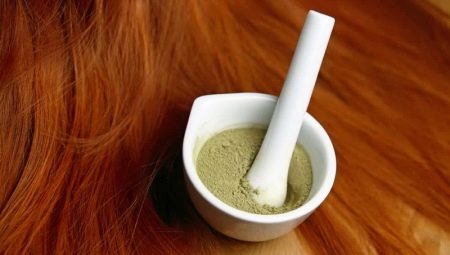Changing the image is pretty easy. For this, for example, you can dye your hair with henna. This will be discussed in the article.
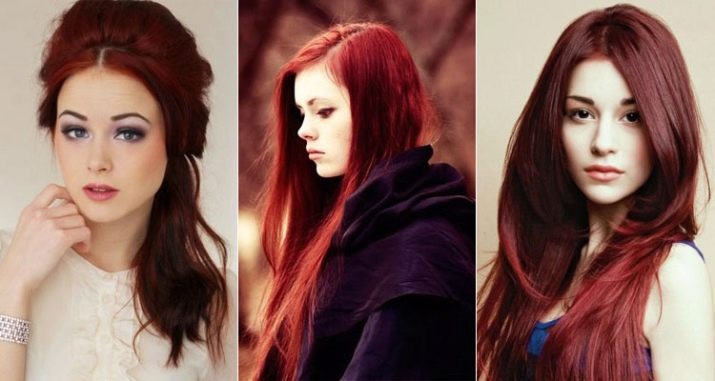
What it is?
A coloring agent obtained from the dried leaves of non-spiked lavsonia is called henna. This product has gained initial popularity in the eastern states. As trade flourished, beautiful women living in different parts of the world got acquainted with henna. Such a product of natural origin quickly became popular and was mainly used for hair dyeing.
The plant from which this natural paint is made is a shrub. Its height is relatively small: only about 1.5-1.8 m. This plant grows in countries with a hot climate. The sun's rays acting on the leaves of lavsonia contribute to the fact that beneficial substances accumulate in them. For this reason, during staining, henna not only changes the color of curls, but also contributes to their healing.
Interestingly, lavsonia, not spiny at night, emits a specific smell. The same “aroma” appears when preparing a coloring composition from crushed raw materials. It should be noted that this smell is not repulsive. For example, many women note that when stained with henna, they do not experience such unpleasant sensations as with the use of paints rich in chemical components and various fragrances.

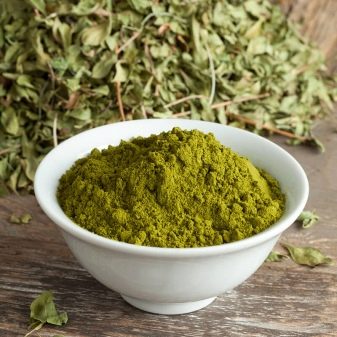
Coloring compositions for hair and eyebrows are made from crushed raw materials obtained from the leaves of lavsonia. It is important to note that the quality of the grinding product is of great importance.
This is also noted by henna producers.Lavsonia grows mainly in India, Egypt and Sudan. However, planting of this thermophilic shrub can be found in other countries with a hot climate.
Interestingly, the powder of shredded leaves of lavsonia has long been used not only for hair coloring. This product has also been used to treat various diseases. For example, historical information has been preserved that this tool was used back in the 16th century. According to documents, the powder of shredded leaves of Lavsonia was used to treat many skin diseases, since a number of components included in its composition have a disinfecting effect. Interestingly, henna was even used to treat wounds and various skin lesions, since the biologically active components that it contains help to accelerate the regenerative processes that occur in the skin.
The powder obtained from the leaves of lavsonia was also used to treat various infectious diseases. For example, oriental doctors used it to treat rashes that appeared on the skin with chickenpox. Modern doctors, of course, do not confirm the effectiveness of using such a natural product for the treatment of infectious diseases. However, in some eastern states, supporters of traditional medicine still use henna to treat these pathologies.

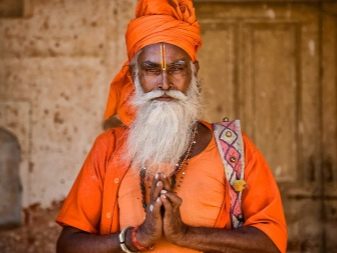
Advantages and disadvantages
One of the advantages of henna is its natural composition. A high-quality powder contains a lot of biologically active components. These substances can have a beneficial effect not only on the hair shaft, but also on the scalp. Some women even note that after staining curls with this tool, they noticed accelerated hair growth.
This natural product contains the components listed below.
- A complex of organic resins. Helps to improve the elasticity of the hair, and also makes them smooth and shiny. Helps reduce excessive dryness of the ends of curls.
- Natural esters. They help improve blood flow in the scalp, which leads to restoration of hair follicle nutrition. This action promotes hair growth. Also, these components help to reduce the loss of curls.
- Chlorophyll. This component is a natural antioxidant. It helps to reduce the risk of negative consequences due to exposure to hair of various external factors. It also helps to normalize hair growth.
- Pectins. They contribute to the normalization of oily hair, helping to prevent the appearance of a delicate problem such as dandruff. They also help improve the appearance of curls, making them visually more voluminous.
- Hennotannic acid. Beneficial effect on the process of normalization of the scalp. It has a detrimental effect on a number of microbes, thereby reducing the risk of trichological infectious diseases. Helps fight the inflammatory process.
- Polysaccharides. Contribute to the fact that the scalp becomes more hydrated. They have a beneficial effect on the glands that produce sebaceous secretion.

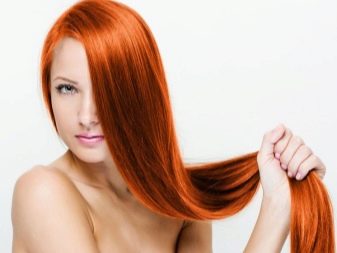
Henna in its composition is much "richer" than many popular paints. It is no coincidence that many women around the world to this day use this tool for staining. For example, manufacturers of hair dyes enrich their products with synthetic vitamins, and henna powder contains many biologically active components without it. It is for this reason that many beauties believe that henna is the best hair dye in comparison with other drugs.
Another advantage of such a coloring product, of course, is that it rarely causes any unpleasant consequences after use. For example, allergies after using henna are quite rare.This is due to the fact that the chemical composition of the product contains virtually no components that could somehow harm the body.
Another advantage of using such a hair dye is its cost. Almost everyone can afford a package with henna powder.
Henna staining at home is a good option for those who want to save a family budget.
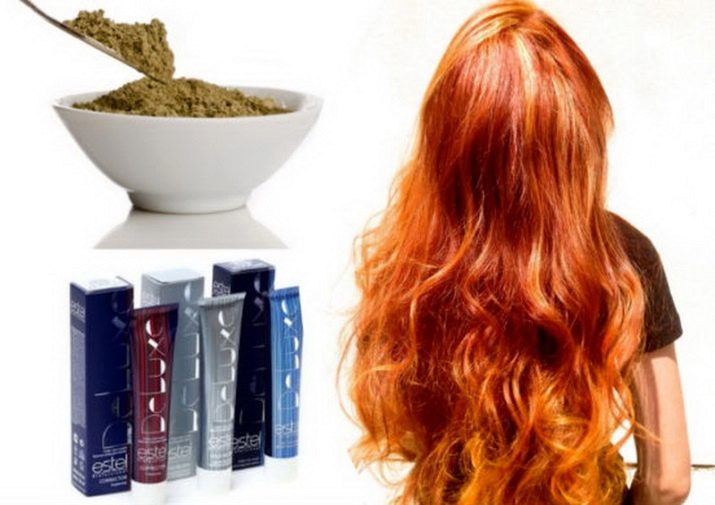
The availability of henna is another product advantage. "Breaking" your head over where to get this coloring agent is not necessary. It is sold in many stores and even some supermarkets around the world.
However, as with any coloring agent, henna powder has not only advantages, but also certain disadvantages. One of them is a small color palette of shades. For this reason, the product is not suitable for creating any creative images, as well as for complex coloring.
Henna, despite the fact that it has quite a few components that are beneficial for the scalp and hair, cannot be used too often. This can cause excessive dry hair. At the same time, the ends of the curls become “dissected”, which means that the hair does not look well-groomed.
Another problem with the frequent use of henna is a reduction in the natural shine of hair. If you stain too often, for example, 3 times a month and more often, then you can make your curls look dull. Moreover, even the use of special shampoos for colored hair will not save the situation.
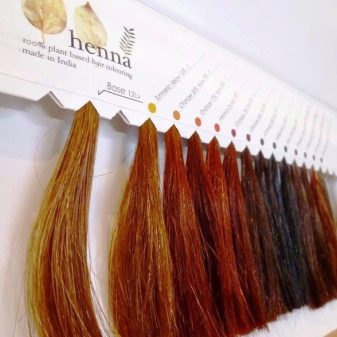
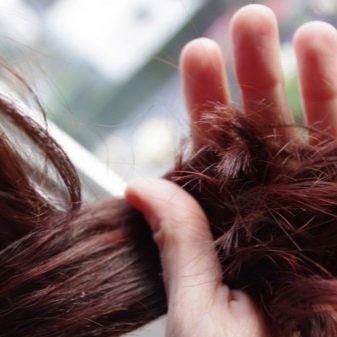
For this reason, experts recommend not abusing with the frequency of use of such a product.
Another disadvantage of henna is the fact that it stains gray hair relatively poorly. The components contained in the coloring powder do not completely fill the structure of the hair shaft, as a result of which gray hair on curls can remain even after dyeing. Some owners of blond hair note that they do not use henna powder, since it is not possible to get the desired color of curls with this tool.
Curl stain experts note that henna mixes poorly with artificial paints. It is because of this that they recommend using such a coloring agent without adding any additional artificial dyes to it. If you want to somehow change the initial color of the henna, then in this case, it is recommended to add only products that have a natural composition to the powder diluted with water.

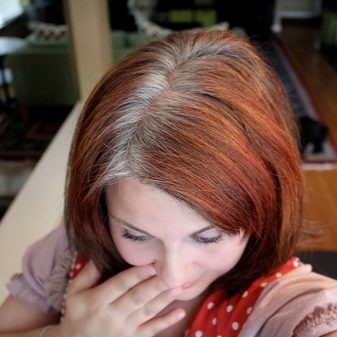
Experts recommend that women who have recently done curling curls remember that staining with henna can cause an acceleration of hair straightening. Do not use this remedy for people who are allergic to henna. For this reason, before staining the curls with a product, it is recommended to conduct a test to determine individual sensitivity.
Henna dyed hair can “fade” in the sun. For example, when exposed to sunlight, such curls lose their color faster. Insolation can also cause your hair to look dull. Experts recommend that ladies who dyed their hair with henna should wear hats in the summer to protect their hair from sunlight.
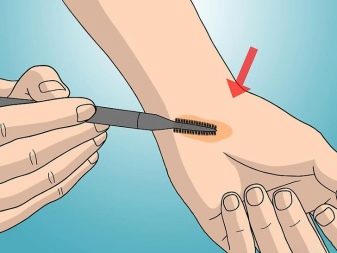
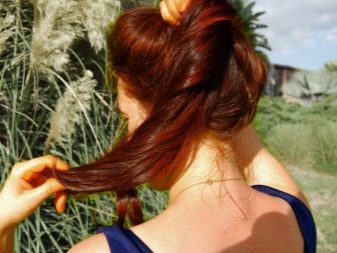
Women with increased dryness of the scalp may not be able to color their hair with henna. Moreover, after a single staining, any adverse effects usually do not happen. But after several such procedures, the scalp can become even drier, and the hair does not look well-groomed. However, such a reaction is individual.
Expectant mothers who decide to dye their hair with henna should remember that the result of such a procedure may surprise them a little.
During pregnancy, many changes occur in the female body. Hormonal changes also affect the condition of the hair. When dyeing hair with henna, it will be more difficult to achieve the desired result.

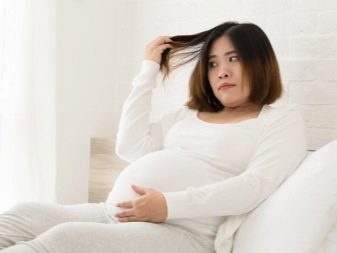
Kinds
On the basis of crushed leaves of lavsonia, you can get a lot of coloring products. They differ not only in the country of the manufacturer, but also in the color palette, as well as the range of applications.
One of the popular natural hair coloring products is Iranian henna. This product is mainly used to color curls in a red tint. Moreover, if you add other natural ingredients to the diluted henna powder, you can achieve a beautiful shade, for example, caramel or even the color of chocolate. Such tinted products are great for owners of dark hair, as they help create a unique and inimitable image.

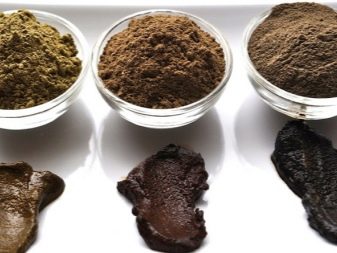
In order to diversify the color of Iranian henna, various natural products can be added to it. For example, oriental beauties sought to obtain interesting color shades by mixing the product with turmeric powder, coffee, as well as various decoctions of herbs.
To make staining not only a cosmetic procedure, but also a healing one, various essential oils can be added to henna powder. The components contained in them will have a beneficial effect on the scalp, leading to normalization of blood flow in the hair follicles.
The addition of essential oils will also help to accelerate the growth of curls.
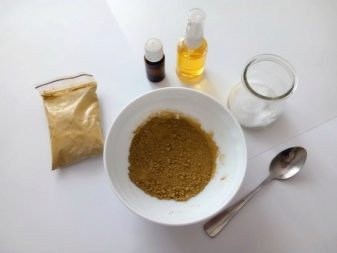
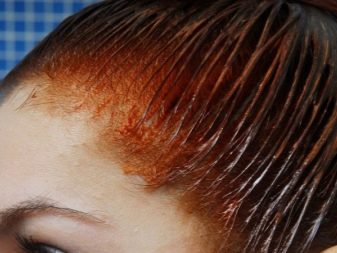
Indian henna is another option for a coloring product. This natural paint can be in several shades. For example, the color palette of this product is included in the following colors and shades:
- mahogany;
- gold;
- burgundy;
- chestnut;
- bitter chocolate;
- the black.


Dye is widely used in India not only for hair coloring, but also for their treatment. For example, Indian beauties use it in order to get rid of dandruff and make hair stronger and silky.
It also helps to normalize the growth of curls. Various natural additives can be added to liquid henna diluted with water.
For example, beetroot juice, wine, coffee, turmeric and many other components are used to create unique shades.
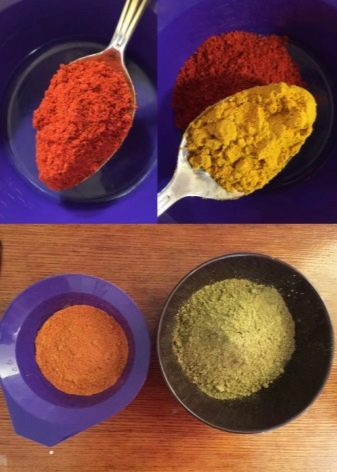
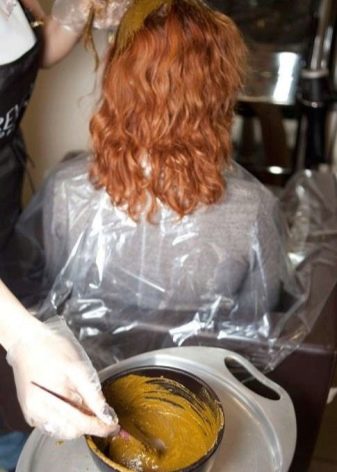
For hair care, colorless henna is also used. This product is suitable for women who are satisfied with their hair color, but would like to improve their structure. Colorless henna is more likely a medicinal product than a cosmetic one. It is used to normalize hair growth, as well as to give them beautiful smoothness and silkiness.
It is worth noting that the product in its composition does not contain color pigments. This means that when using it, you do not need to be afraid of hair coloring. Experts note that to achieve the desired effect, colorless henna should be applied in a course. If desired, during the year, you can, therefore, "treat" the hair several times.

The use of the product contributes to:
- improving hair growth due to increased blood circulation in the hair follicles;
- eliminate dandruff;
- moisture of the scalp and, as a result, a decrease in increased fat content;
- normalization of the secretion produced by the sebaceous glands;
- giving shine to curls.
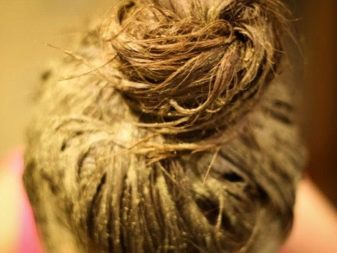

For many years, it was generally accepted that henna is a product that does not fit blondes at all. However, this is not quite true. There are currently henna-based products that help lighten hair. Such henna is called white.
Some manufacturers of this natural paint assure that through the use of the product it is possible to achieve that the curls become snow-white. However, not all women who have tried this paint agree with this.
White henna helps to make hair brighter, but to achieve, for example, the so-called Scandinavian blond, is difficult.
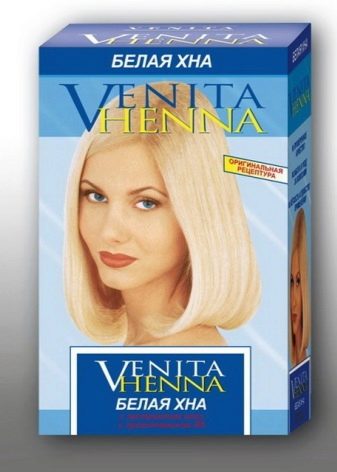
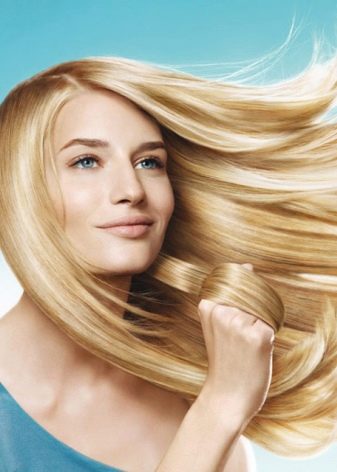
Shades
Most henna varieties are good for girls with dark hair. The use of this natural paint really helps to make a unique and memorable image, while staining can be performed even at home, without resorting to the help of a master.
Through the use of henna, you can give your hair a shade of chocolate or caramel. In this case, you can color both all curls and individual locks. Colored hair with colored henna looks very beautiful and well-groomed. To give curls beautiful brown shades, henna from India is perfect.

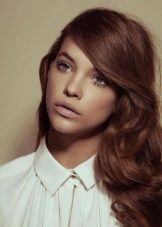
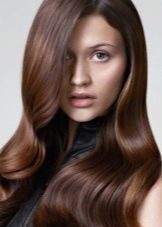
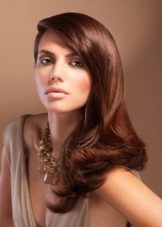
For dark-haired women, henna and turmeric can be used to give hair a beautiful shade of milk chocolate. This mixture, applied to the hair, helps to achieve a beautiful shade.
To get a shade of burgundy, juice obtained from beets is added to henna before applying it, and if you add more juice, you can even get a fairly bright red color with a moderate brownish sheen.


Owners of chestnut-colored curls for staining can use the product in a mahogany shade. When applying such a paint, it should be remembered that staining can contribute to the addition of several years to the image. It is for this reason that it is not suitable for everyone.
There is henna that is brought from Iran. It gives the hair a rich red color. Such a natural paint can be used by owners of green eyes.
Dyeing hair with this dye will make the image brighter.
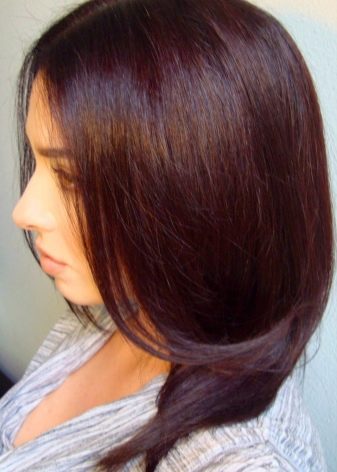
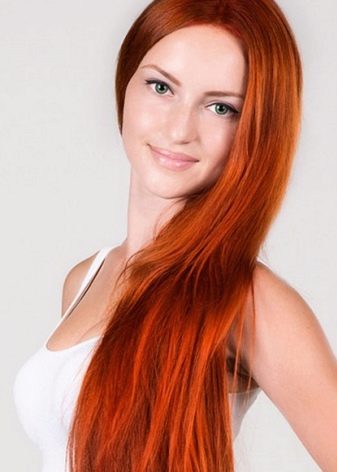
Iranian powder of lavsonia can be used to create an interesting palette of shades. The table shows the various combinations of mixing the coloring powder with different products and the expected result of the use of this composition.
Ingredient Added | The resulting shade |
Cinnamon powder | Bright red |
Coffee | Rich brown |
Tea tree essential oil, ginger | Light red |
Chicory | Golden |
Onion husk (infusion) | Ocher |
Chamomile, Turmeric | Golden |
Red wine, beetroot juice, cranberry extract | Rich shade of ruby |
Peel from tangerines and oranges | Yellow orange |
Elderberry | Plum |
Chamomile infusion or dandelion root | Wheat |
Proponents of the use of natural products for hair coloring note that such combined henna-based formulations have a beneficial effect on the condition of curls. In their opinion, hair becomes more “lively” and also looks well-groomed. The undoubted advantage of the use of such compositions is that they can be used to color curls quite often.

Owners of brown hair should not be upset that henna does not suit them. Currently, there are many natural colors on the market based on shredded leaves of lavsonia spiny, which are used even by blondes and girls with naturally blond hair. Through the use of such dyeing products, you can give your hair a beautiful wheat or golden hair color.
Some owners of light brown curls use henna brought from Iran to stain them. But before using such a product, they add other plant components to the powder, such as turmeric or chopped chamomile flowers. These coloring compounds are perfect for girls who want to give their hair a golden hue.
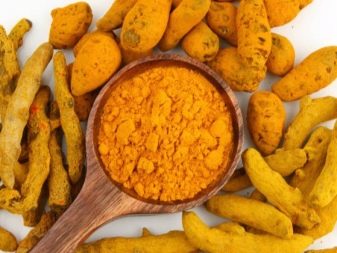

Owners of fair hair dyeing experts recommend caution. Sometimes getting the desired shade through the use of henna does not work. It also happens that getting the result you want is not possible on the first try.
Manufacturers rating
The abundance of various natural colors can lead to confusion. In some cases, choosing a really good product can be quite difficult. Dyeing experts recommend that you carefully read the different ratings of such a product before buying henna.
Zeitun product is available in Jordan.He often leads popular ratings. This natural paint has an excellent composition.
It can be used not only for dyeing, but also for hair treatment.

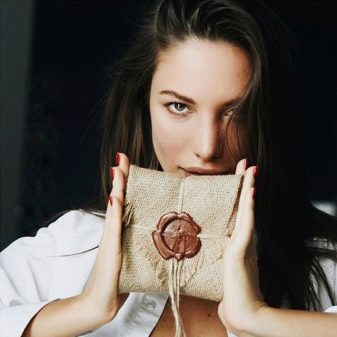
Many popularity ratings of various henna also contain products from the following manufacturers:
- Khadi;
- Lady Henna;
- Aasha herbals;
- Day 2 day care;
- Chandi;
- IndiBird
- Triuga Herbal.
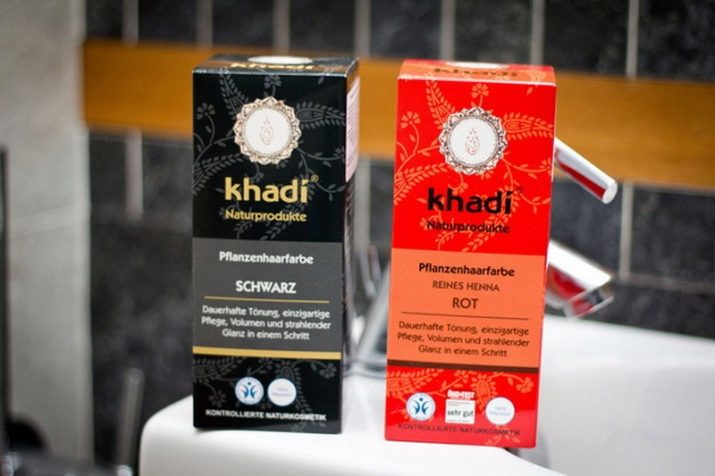
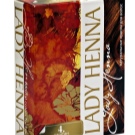

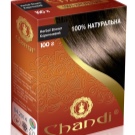
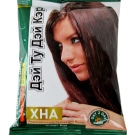
Terms of use
Henna is a great product for home use. Such staining is quite simple to do even on your own. This will require henna and auxiliary plant components (if desired), as well as standard devices for coloring.
Before applying a natural dye to curls, you need to make sure that its shelf life has not expired - this will minimize the risk of possible negative consequences from the use of the product. In order for the coloring composition not to get on the clothes, the shoulders should be covered with a protective cape.
Hair before applying to them with a natural composition should be combed well. In this case, the painting will be more uniform.
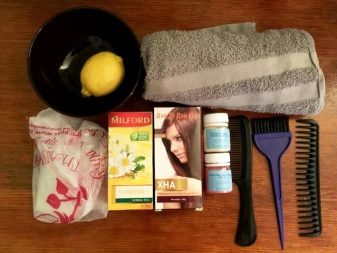
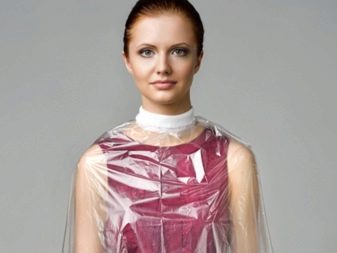
How to breed?
If powder from lavsonia is used to color curls, then it should first be diluted with water. Make it better in dishes made of non-metal. To mix the ingredients, you can use a container made of plastic or even ceramic. You can also use glassware.
For staining, you need to choose the right amount of product. This must be done before applying the coloring composition to the hair. Keep ready diluted henna in the refrigerator is not worth it. Dyeing should be done with ready diluted dye composition immediately after it is infused.
For dilution of the powder or its "steaming", you should not use boiling water, but water, which has a temperature of approximately 75-80 degrees. It is also possible to dilute such a product not only with water, but also with other liquids, for example, kefir. This method is great for owners of curls, prone to dryness.
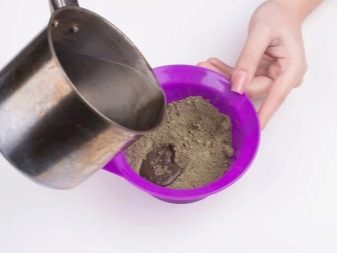
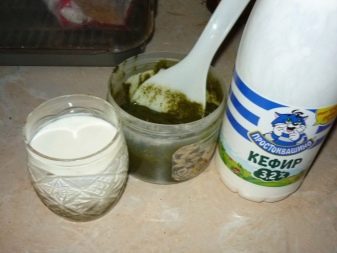
It is worth noting that it is better to remove the fermented milk product before staining from the refrigerator in advance.
The calculation of the product required for staining depends on many factors. The required amount, for example, depends on the initial density of the hair, as well as on their length. As a rule, in practice, every woman who uses henna to color her curls determines the amount of dye powder herself.
However, there are conditional recommendations. For example, for staining short curls (up to 10-12 cm), about 100 g of a coloring agent is required. For owners of hair with shoulder-length hair, the amount of natural dye is already doubled. For painting curls below the shoulders, usually 350-400 g of powder is required.
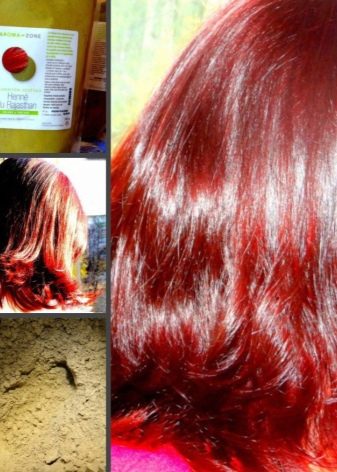

At this stage, you can also add various auxiliary ingredients to the henna, which will help create a unique shade. For example, coffee, turmeric or beetroot juice can be added to the coloring powder.
The finished coloring composition should have a certain consistency and resemble thick sour cream in density. Excessive addition of liquid can make the paint turn out to be too liquid, which means it will drain over the skin and may even stain clothes.
A water bath is used to dilute the ingredients. It helps the components to mix better with each other. At the same time, specialists in henna hair coloring note that it is not worth replacing a water bath with a microwave.

Application
Before applying the prepared coloring composition to all hair, first it is better for them to process just a couple of curls. In this case, you can evaluate the finished consistency of the product, and how it is distributed through the hair. Some women say that this method helps them predict a possible future staining result.
It is better to apply the coloring composition to clean, slightly damp curls.Some women apply the product on dry hair. However, it is still recommended to wash the hair before carrying out such a home dyeing. This should be done using ordinary shampoo. Hair should not be dirty before applying the dye product.
After pre-washing your hair, you do not need to apply rinsing rinse or some kind of caring agent on the curls.
It is better to dry your washed hair with a towel so that it becomes slightly damp.
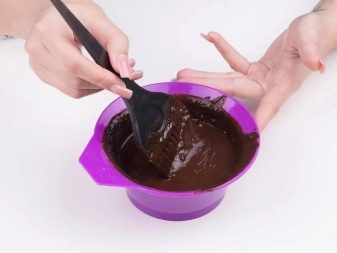
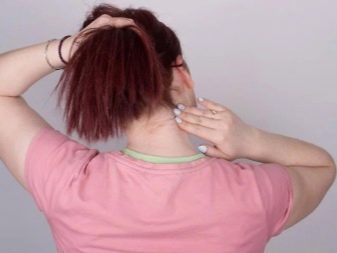
Dyeing curls is recommended first from the back of the head. This plot, as a rule, is difficult to paint at home. Processing, in the first place, are gray strands. This is done so that gray hairs can be well dyed to the desired shade.
Coloring pigments contained in henna can color not only hair but also skin. It is for this reason that the agent should be applied carefully, avoiding the composition getting into the visible areas of the face. Some women, in order to reduce the risk of dark and red spots on the skin after staining, recommend applying a cream to the face near the hairline.

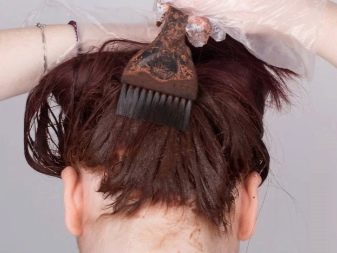
It is recommended to apply a coloring composition to the hair with protective gloves. The fact is that the color pigments contained in the product can color the skin of the hands and also make it dry.
The use of protective gloves helps minimize potential negative consequences.
How much to keep?
The exposure time of the composition on curls can be different. It is largely determined by the intensity of the desired color. If the coloring natural composition is used only to give the curls a moderate shade, then in this case it should be kept on the hair for 15-20 minutes. In order to fully color the curls, it takes already a little longer: usually 0.5-2 hours.
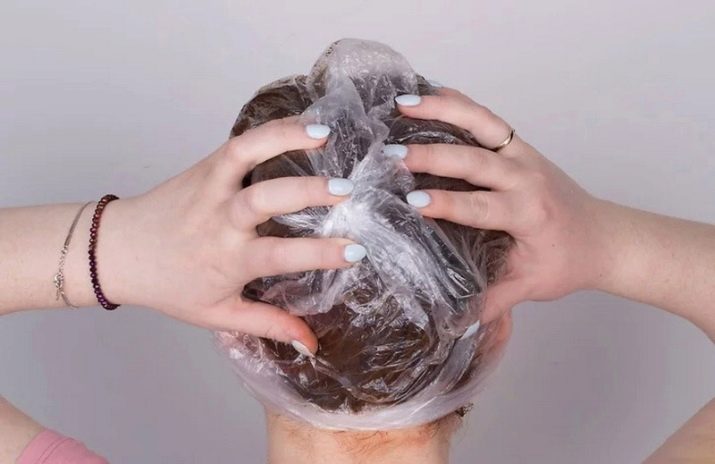
How to rinse?
In order to remove residues of the coloring agent, it is necessary to use water. To do this, rinse the hair thoroughly under running water. It is undesirable to use shampoo, as this can contribute to the fact that the coloring composition is completely washed off the hair. However, many women who use henna for staining, use shampoos to rinse it off with curls, because they believe that this will not affect the result.
After the remnants of natural dye are washed off, you do not need to use a balm or a mask - this can contribute to the fact that the resulting shade on the hair changes. It is also recommended not to use such products within 3-5 days after home dyeing.
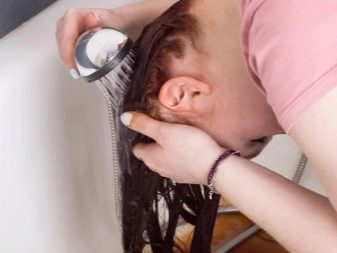
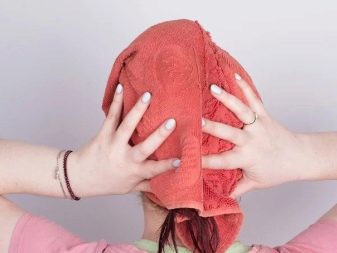
Care
Henna-colored curls need to be well looked after. In order to maintain a saturated color after dyeing longer, it is recommended to use shampoos designed specifically for colored hair. Such products usually have a specific composition with components that have a gentle effect on the curls.
In order to keep the color of dyed hair after application of henna saturated, you need to protect them from direct sunlight. For this, in the summer, various hats are great.
It is imperative to protect your hair from the sun when you are on the beach.

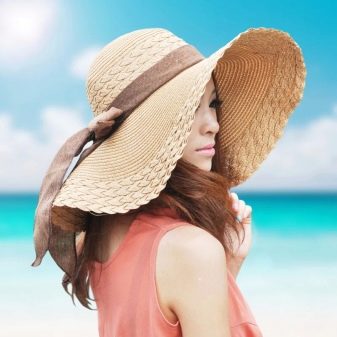
To maintain the shade, various tinting agents can be used. Currently, there are such products that contain henna in their composition. They are great for preserving the resulting shade of hair for a long time.
Reviews
Henna is a fairly popular dyeing product. Despite the abundance of modern colors, this tool is deservedly in great demand. Many women, according to reviews, use this tool not only to change the color of their hair, but also just to “treat” them.
However, among the many positive opinions, there are also negative ones.For example, some women say that henna is not used for hair coloring, since this product does not help them achieve the desired result. Among the negative reviews there are also those where the girls note that henna, unlike some well-known hair colors, is washed off quite quickly, and therefore it is necessary to resort to coloring quite often.

Hair dye specialists note that to color curls with white henna in blond, this remedy should be used several times. Only such repeated use can help achieve the desired result. In practice, there are cases when women, even after several applications of paint, could not achieve the desired result and, as a result, were forced to buy chemicals or go to beauty salons.
To treat hair with white henna will not work. Of course, this product contains relatively few components that could somehow damage the curls, however, it is also impossible to say that such a remedy heals hair.
This paint refers more to decorative products than to caregivers.

See how to get the right shade of hair with henna on dark hair in the next video.
